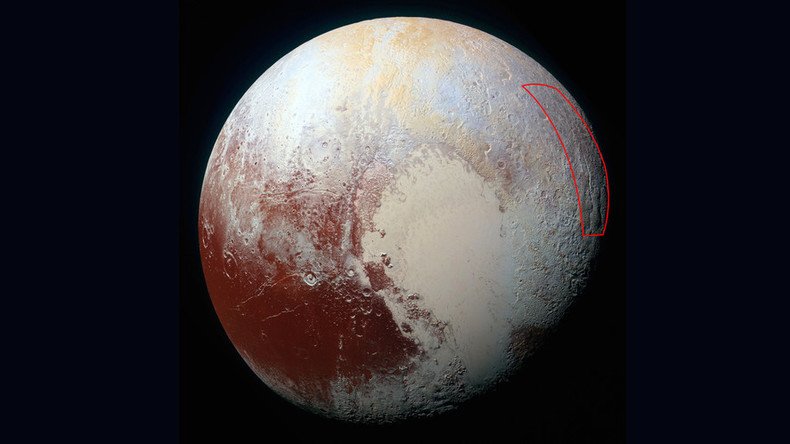Giant ‘icy spider’ captured on Pluto’s surface in latest NASA image (PHOTO)

Pluto has once again amazed scientists with its unusual features after NASA captured a sprawling image resembling a giant spider on the dwarf planet.
At least six extensional fractures were spotted on Pluto’s icy surface - the longest of which, Sleipnir Fossa, stretches more than 580km (360 miles).
.@NASANewHorizons saw an icy 'spider' on Pluto https://t.co/xzVH4zi9Q4pic.twitter.com/SCJi4fVW8s
— NASA Solar System (@NASASolarSystem) April 7, 2016
“Oh, what a tangled web Pluto’s geology weaves,” said Oliver White, a member of the geology team at NASA’s Ames Research Center in California.
“The pattern these fractures form is like nothing else we’ve seen in the outer solar system, and shows once again that anywhere we look on Pluto, we see something different.”
This is what the highest resolution color image of Pluto yet released looks like. pic.twitter.com/Xn8OrxcZc3
— Discover and Know (@DiscoverAndKnow) April 7, 2016
Pluto's Bladed Terrain in 3D: https://t.co/Y2mv37fbIc by @NASA, @jhuapl, @swripic.twitter.com/0Rx69uLoAD
— Astro Pic Of The Day (@apod) April 2, 2016
Scientists also noted that the spider's "legs" in particular expose red deposits below Pluto's surface.
They say the “spider” patterns may have formed as a result of a focused source of stress in the crust beneath the fractures’ point of convergence. This could, for example, be due to material welling up from under the surface.
READ MORE: Lost in space? Missing ‘astronaut’ dog teddy sparks massive search (VIDEO)
This pattern differs from fractures seen elsewhere on Pluto which tend to run parallel to one another in long belts. Researchers say those parallel marks are caused by the global-scale extension of Pluto's water-ice crust.
Similar radially-fractured centers have been spotted by other NASA spacecraft on Venus and Mercury.
NASA’s New Horizons spacecraft captured the picture at a range of approximately 33,900km (21,100 miles) from Pluto about 45 minutes before its closest approach on July 14, 2015.












